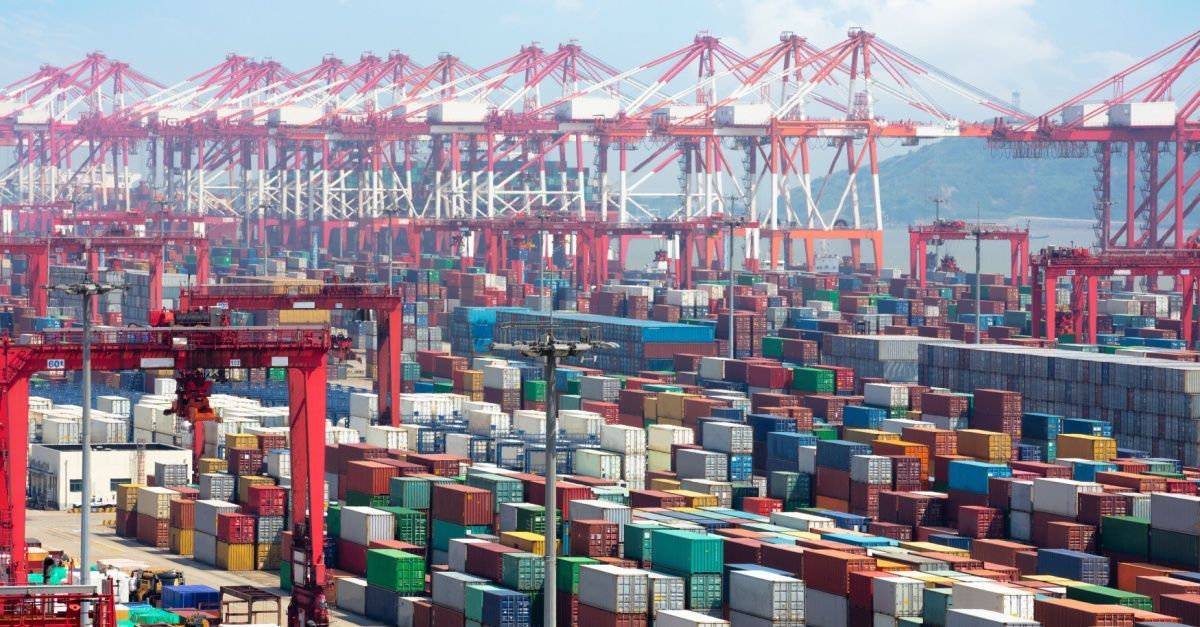Supply Chain Professionals Cast Wary Eye as Strike Threats Loom
Blog Post CTA
In a prior edition, we dug into negotiations and a possible strike by the International Longshoreman Association, or ILA, a labor union. But it’s not the only labor action that could have far-reaching impacts on supply chains and freight movement.
Here are six headlines to keep up with ongoing union actions and other supply chain and logistics news.
A Deal at the Border
Canadian border agents are voting as we speak on a new four-year labor agreement with the country’s government, Supply Chain Dive reported
In early June, the union and Canada’s treasury board reached a tentative agreement that averted a strike. Had the strike occurred, it could have led to backed-up traffic at dozens of crossings along the
U.S.-Canada border. It likely would have also stalled or created longer processing times for freight shipped between the two countries. There’s a lot of that – freight between the U.S. and Canada totals about
$65 billion every month, with computers, vehicles, and electrical machinery making up a significant portion of the shipments.
Now, the union is working on a longer-term agreement, per the Supply Chain Dive article. Border agents have from June 20 to July 4 to vote on the agreement, and a result is expected shortly after voting ends at noon Eastern on July 4. The agreement, if ratified, will cover June 2022 through June 2026. It includes compounded wage hikes of more than 15%, along with concessions related to shifts and paid time off.
Stalled Negotiations and a Strike Vote
Also in Canada, the Teamsters Canada Rail Conference is organizing a vote on a strike. The labor union represents more than 9,000 Canadian rail employees who work for Canadian National and CPKC – the combined railways of Canadian Pacific and Kansas City Southern.
The strike vote is happening as contract negotiations with the railroads have stalled,
according to FreightWaves. The vote will continue until June 29. If members vote in favor, and the strike does not pose a threat to public safety, a strike could take place as soon as mid-July.
Regarding negotiations, rail workers such as conductors, engineers, and traffic controllers are looking for higher wages and provisions related to crew scheduling and fatigue management. Canadian National has been negotiating with the union since November. The union said it has “no indication” how long the negotiation process might take or what the outcome could be.
An Abrupt Shutdown
U.S. Logistics Solutions, a Texas-based company, abruptly shut down its operations. Thousands of truck drivers, warehouse employees, and dock workers were laid off. They received notice that the company would halt operations, and that they would not receive their paychecks, according to
Chron, a website covering news in Houston, Texas.
The company was owned by a private equity firm, which ceased operations and left USLS without a bankroll.
USLS was called Forward Air Solutions before it was acquired by the private equity firm in 2021. The company distributed time-sensitive products.
Truck Tonnage Starts Its Turnaround
Despite some turmoil on the labor side of the logistics industry, truck tonnage is finally on the upswing.
The American Trucking Associations’ for-hire truck tonnage index gained 1.5% year-over-year in May,
Transport Topics reported. That was the first increase in 15 months for the index, which surveys ATA members and draws feedback from contract freight rather than the spot market.
For many months, trucking industry executives and analysts have been postulating that the market is due for a
turnaround after many months of historically low rates. An overcapacity of
carriers, many of which entered the market during the pandemic, and a decrease in demand from shippers after pandemic highs, have contributed to the low trucking rates. Experts have been cautiously optimistic that trucking will recover, and the ATA is continuing that sentiment.
“It is still too early to say whether this is the start of a long-awaited recovery in the truck freight market,” said the organization’s chief economist.
Not all indices measuring the trucking market have shown positive results, however. The Cass Freight Index, for one, reported shipments down by 5.8% year over year.
“Some data sets are looking pretty good, other data sets are not,” said Tim Denoyer, senior analyst at ACT Research, which also assesses the state of the freight market. “The freight cycle is recovering, [but] it’s not lifting all boats yet.”
Diesel Prices Climb
Also turning around: diesel prices. According to Transport Topics, the price of diesel had declined for nine weeks in a row. But that ended in mid-June, when prices rose 7.7 cents, resulting in a national average diesel price of $3.735.
The price hike is the biggest one since mid-February, when diesel rose 21 cents to $4.109. Still, a gallon of diesel is about eight cents less than it was at this time last year.
OOIDA vs. EPA
Even as diesel prices tick up, the Owner-Operator Independent Drivers Association (OOIDA) is suing the Environment Protection Agency (EPA) over the agency’s final rule on electric vehicles, FreightWaves reported.
The rule aims to reel in greenhouse gas emissions with a handful of provisions related to heavy-duty vehicles. The
EPA’s rule affects truck model years 2027 and 2032 and applies to several sizes, from delivery trucks to long-haul sleeper cabs. For example, long-haul tractors would need 25% of their fleet to be zero-emission by 2032.
OOIDA, which represents independent truckers and small businesses, contends that the vehicle standards would put its members out of business due to the costs associated with new equipment and upgrading their fleets. A new Class 8 diesel truck costs about $180,000, whereas the same-size
electric truck costs $400,000. The association called the EPA’s rule “arbitrary, capricious, an abuse of discretion, and not in accordance with law.”
Navigate Strikes and Shutdowns With the Help of Entourage Freight Solutions
Work stoppages or trucking company shutdowns can be sudden and hard to predict. A strike among transportation workers or border agents can have ripple effects up and down the supply chain. Having a trusted partner and contingencies in place can help keep your freight flowing as smoothly as possible.
That’s where Entourage Freight Solutions comes in. EFS provides steady services that can help you navigate an ever-changing logistics environment and receive important information in real time.
Entourage Freight Solutions offers the following services, and many more:
Our LTL service provides on-demand access to capacity, along with real-time data and peace of mind in this high-stakes world.- Our Freight Management lets your team stay organized across inbound and outbound logistics, tracking market capacity and using automation notifications to keep everyone informed.
- Our Refrigerated transport provides expertise in everything from finished goods to raw materials, ensuring products arrive on time and in top condition.
Request a quote today to see how Entourage Freight Solutions can help with your freight movement and other supply chain needs.









